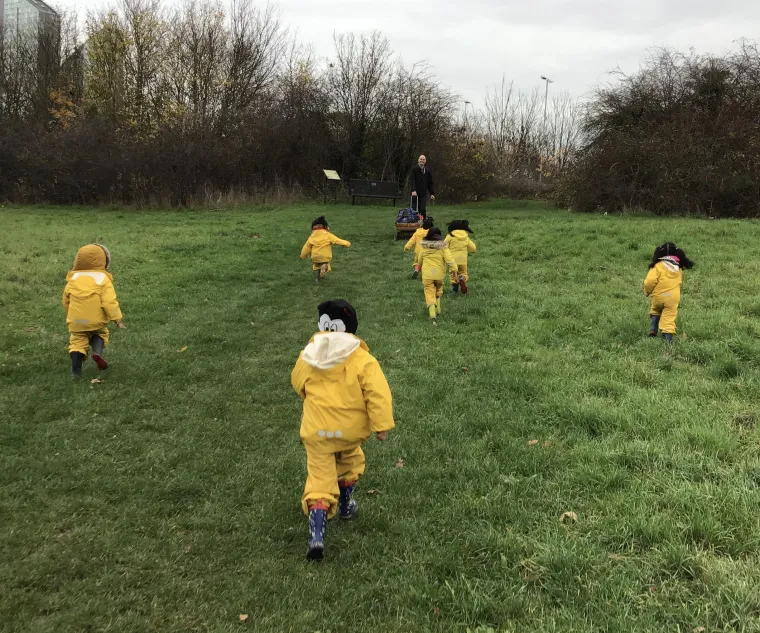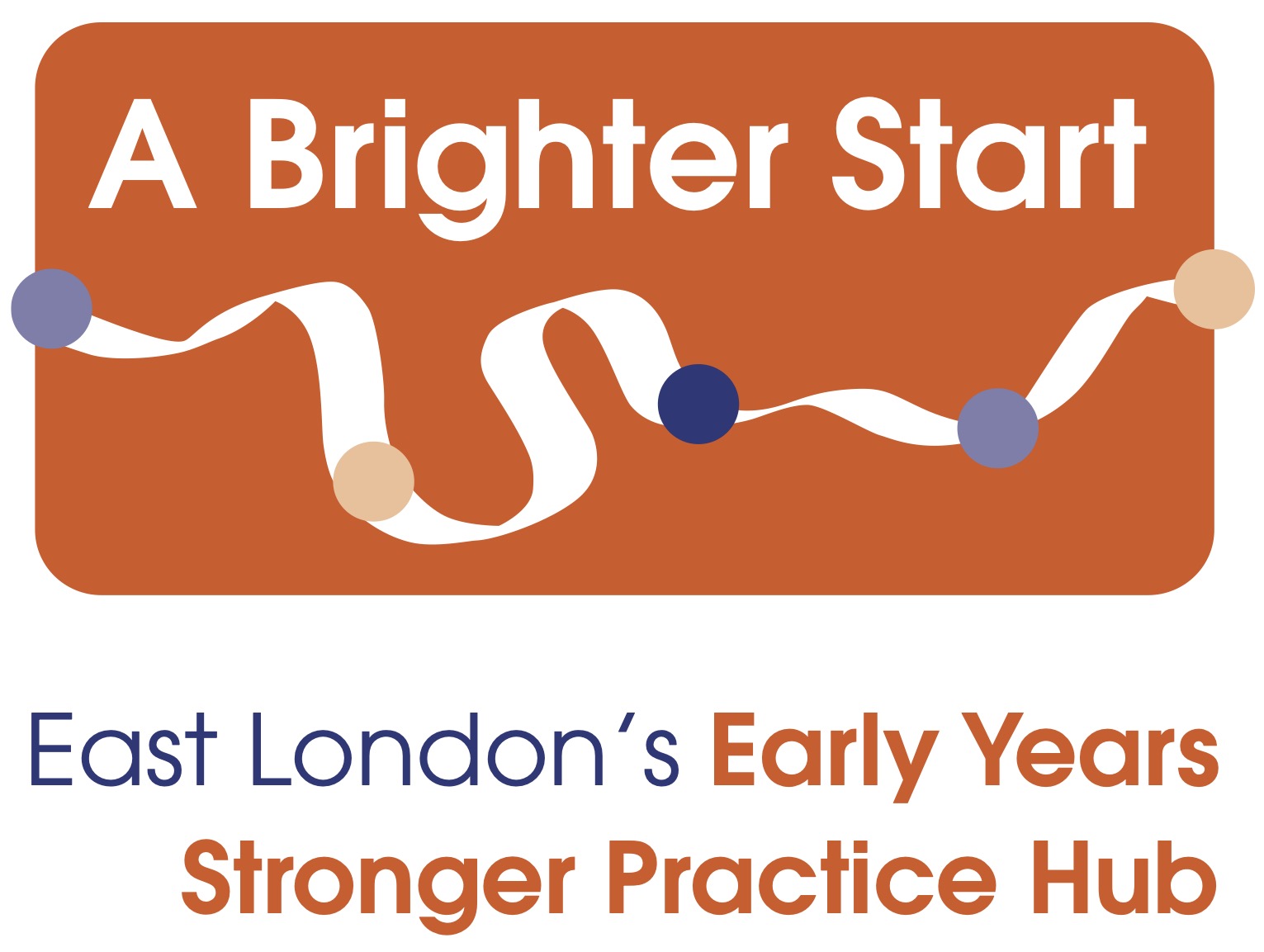Being in a quiet, natural and calming environment is an optimal way to support communication and language. It gives children opportunities to hear and use new words and engage in back and forth conversations
At Sheringham, children take part in Forest School sessions which involve walking from the nursery to a special area in the local park.
Forest school offers children a great experience of learning outdoors in nature. It boosts their confidence in using tools, climbing trees and taking risks. Rich communication and language opportunities are integral to all aspects of Forest School. And that’s from the moment we leave the nursery door.
Walking and talking
Our journeys to and from Forest School are wonderful chances to talk with the children. We let them initiate the conversation wherever possible. For this to work, it is important that we are confident and comfortable in following the child’s lead. This supports the all-important back and forth interactions. If we default to closed questions, we can limit or stop the flow of conversation.
Sometimes we start a conversation if the child is not confident or able to. We then try to follow their lead as much as possible as we talk.
So, rather than thinking of our walks as a necessity, we prioritise them as times when precious learning happens.
Some of our discussions are prompted by:
- the number of bicycles we see on the street
- the interesting buildings that we pass
- the work carried out by builders in the area
- the weather and how it makes us feel
- the directions we take to our destination
Encouraging conversations
On one journey to Forest School, a child noticed a shoe on the ground. We could have ignored it or simply acknowledged it. Instead, we encouraged the children to think about where it might have come from.
Samira: Look, a shoe!
Adam: Oh yes, it’s a shoe. It’s not mine because I have both of my shoes. I wonder how it got here.
Samira: Maybe someone lost it?
Adam: Everyone, check if you lost your shoe!
Abdul: It’s big.
Adam: Yes, it is a big shoe. Too big for you.
Laila: Maybe a giant lost his shoe.
Adam: Oh no, poor giant. The giant has only one shoe. I wonder if the other shoe is here.
Laila: He is angry because he lost his shoe.
Samira: No, he lost shoe. Other shoe not here.
Adam: Everyone, Laila thinks the giant is angry because he lost his shoe. How could we help? Where could the other shoe be?
Abdul: He has shoe. He lost one shoes, Oh no.
Adam: We could leave the shoe next to the gate.
Laila: Yeah, he can find it.
Adam: We can see if the shoe is still there next week.
On our following two journeys we encouraged the children to remember the stories they had created. They kept an eye out for the shoe. When they spotted it in a slightly different location, they recalled their story and developed it, ‘Maybe the giant has got new shoes now.’
Not every walk to Forest School will involve lost shoes or an upset giant, but each and every one can involve rich conversation. The destination is important and exciting, but practitioners must be sure not to miss out on the magical talking and walking on the way there … and back.

Relevant information:
The EEF’s EArly Year Evidence Store: Approaches for supporting communication and language development
The ShREC approach: 4 evidence-informed strategies to promote high quality interactions with young children
By Adam Mohamed
